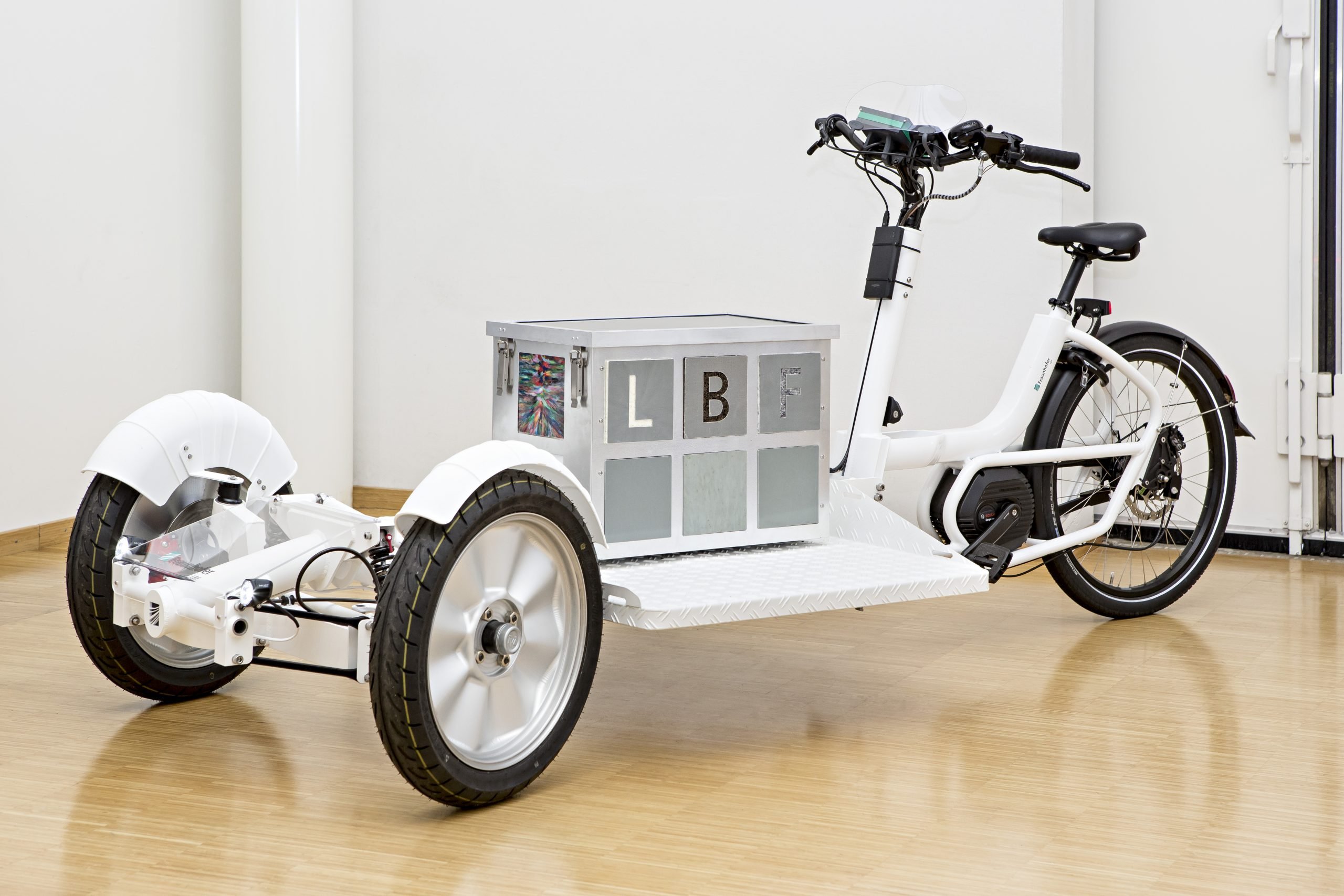
Bicycles have been booming in recent months. According to various statistics, demand has doubled since the beginning of the corona pandemic. While in some countries, it has even tripled. But the bicycle is not only playing an increasingly important role as an individual means of transport, it is also gaining in stature as a means of transporting goods. Scientists at the Fraunhofer Institute for Structural Durability and System Reliability LBF have now built a cargo bicycle that is lighter and has a greater range than conventional, electric-powered models.
The interdisciplinary research team of polymer chemists and engineers from the departments of fatigue strength, materials science, and mechatronics has found new ways to improve the safe use of electrically assisted cargo bicycles and have also extended their range. For example, they were able to reduce the weight of the front section of a cargo bike by a third thanks to the new frame design.
What’s more, the capacity of the battery has been expanded due to new innovations and the housing has been dispensed with by integrating it directly into the frame. The scientists point out that these features which have been integrated into the bicycle have great potential for numerous applications in various industries, including non-mobility applications.
Lightweight frame with integrated battery
CAD models were created for the design of the lightweight frame and the construction of new lightweight rims. These were based both on ride measurements carried out by the company itself and on baseline data on the weight and geometry of the selected commercial cargo wheel.
“The structural design and construction of the new lightweight bicycle frame with a hollow frame profile made of high strength aluminum alloys form the basis for future work in other subprojects,” the researchers say. The new front end design alone has led to a weight reduction of about 40% compared to the reference model.
The developers chose the hollow frame profile in order to be able to install the specially developed TES (Tubular Energy System) battery system in a concealed location. This not only cuts out the battery housing – and thus the weight – but also protects the battery from weather and heat and makes it theft-proof.

Tubular Energy System (TES)
Li-ion cells are arranged in a tubular form inside the ‘Tubular Energy System’ and are consequently ideal for integration into the hollow frame profile. With a total of 80 cells, the system is twice as large as the standard battery system and has a capacity of 1000 watt-hours (Wh). The battery’s charge level can be checked via a special app on a smartphone. This not only enables the cyclist to cover significantly longer distances with electrical assistance but also monitor usage and remaining power, depending on the cargo weight being transported.
“With the LastenLeichtBauFahrrad (Lightweight-cargo- construction bike in English), we have once again demonstrated LBF’s systems competence, flexibility, and creativity,” says Dr. Saskia Biehl, who headed the cross-divisional research project at Fraunhofer LBF. The lighter bicycle can be ridden for longer and can maneuver more easily, which alleviates physical strain on the user and means that more attention can be paid to traffic. But that is by no means the end of its development.
“There’s more to it than that,” says the scientist. “We are also working on a system for active stabilization and elimination of handlebar wobble. This will help the user, even more, to use these exciting vehicles safely as an alternative, environmentally friendly means of transport in dense urban traffic.” The researchers will present more of their developments at the “Fraunhofer Solutions Days” on October 29, 2020..
Title picture: Lightweight, intelligent, stylish: The “LastenLeichtBauFahrrad” (L-LBF) shows the potential of feature-integrated lightweight construction for transportation. © Ursula Raapke, Fraunhofer LBF






